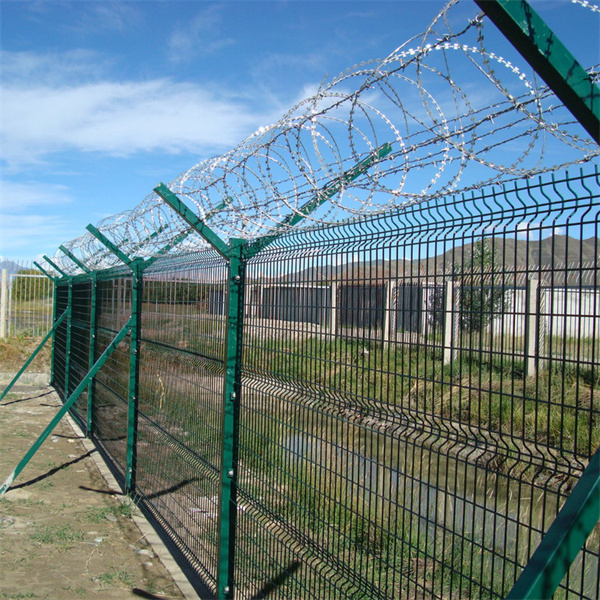Nov . 08, 2024 12:22 Back to list
Understanding Gabion Structures and Their Suppliers for Effective Use
Understanding Gabion Meaning and Suppliers
Gabions have gained popularity over the years as versatile construction elements used in civil engineering, landscaping, and environmental applications. To understand the concept of gabions, it is essential to delve into their meaning, historical context, applications, and the suppliers that provide these practical solutions.
What is a Gabion?
The term gabion originates from the Italian word gabbione, which means big cage. Gabions are wire mesh containers filled with rocks, stones, or other materials. Typically, they are rectangular or cylindrical in shape, and their structure allows for numerous applications, primarily in erosion control, retaining walls, and decorative landscaping. The rigid structure created by the wire mesh and the weight of the materials inside provides excellent stability and durability, making gabions an ideal solution for various engineering and design challenges.
Historical Context
The use of gabions dates back to ancient times. They were originally employed by the military to create fortified structures and defensive positions. Over the centuries, their applications evolved, and they became widely utilized in civil engineering projects to control soil erosion and improve drainage. Today, the use of gabions has expanded to include aesthetic landscaping elements, providing both functional and visual enhancements to outdoor spaces.
Applications of Gabions
1. Erosion Control Gabions are highly effective in controlling soil erosion along riverbanks, hillsides, and coastal areas. They help stabilize the soil and prevent landslides by dissipating the energy of flowing water.
2. Retaining Walls Gabion walls can be built to support the earth and prevent collapse in areas with significant elevation changes. Their porous design allows water to drain, reducing hydrostatic pressure behind the wall.
3. Riverbank Stabilization In regions prone to flooding, gabions act as barriers that absorb and deflect flowing water, protecting natural and manmade structures from damage.
gabion meaning suppliers

4. Landscaping In landscaping projects, gabions can be used creatively as decorative features, such as planters or seating areas. They can also be filled with attractive stones or recycled materials to enhance the aesthetic appeal of a garden or park.
5. Wildlife Habitat Gabion structures can provide new habitats for various species by creating sheltered environments in otherwise depleted areas.
Suppliers of Gabions
The market for gabion supplies has flourished, driven by the increased demand for sustainable and practical construction solutions. Numerous suppliers offer a range of gabion products, including
1. Manufacturers Several companies specialize in the production of high-quality gabion cages made from galvanized or PVC-coated wire mesh. These manufacturers often provide customizable options to meet specific project requirements.
2. Distributors Many distributors stock gabions and their associated materials, such as fill stone, geotextiles, and anchoring systems. They often serve various sectors, including construction, landscaping, and environmental management.
3. Online Retailers With the rise of e-commerce, numerous online platforms have emerged that allow customers to purchase gabions directly. These retailers often provide detailed product descriptions and customer reviews, making it easier for buyers to make informed decisions.
4. Local Contractors Many construction contractors also supply and install gabions as part of their services. They can offer valuable insights on the best products for specific projects and assist with installation for optimal results.
Conclusion
Gabions represent a unique intersection of functionality and aesthetic appeal in modern construction and landscaping. Their enduring nature, ease of use, and diverse applications have cemented their status as a preferred choice in many engineering solutions. With a growing number of manufacturers, distributors, and online suppliers, obtaining gabion products has never been more accessible. As awareness of sustainable practices increases, gabions will likely continue to play a crucial role in both environmental protection and creative outdoor design. Whether for practical uses or decorative enhancements, gabions remain a powerful tool in the hands of engineers, architects, and landscapers alike.
-
Why PVC Coated Gabion Mattress Is the Best Solution for Long-Term Erosion Control
NewsMay.23,2025
-
Gabion Wire Mesh: The Reinforced Solution for Modern Construction and Landscape Design
NewsMay.23,2025
-
Gabion Wall: The Flexible, Seismic-Resistant Solution for Modern Landscaping and Construction
NewsMay.23,2025
-
Gabion Wall Solutions: The Durable, Decorative, and Affordable Choice for Every Landscape
NewsMay.23,2025
-
Gabion Basket: The Durable and Flexible Alternative to Traditional Retaining Walls
NewsMay.23,2025
-
Gabion Basket: The Proven Solution for Slope Stability and Flood Control
NewsMay.23,2025
-
Versatility of Chain Link Fence Gabion
NewsMay.13,2025






